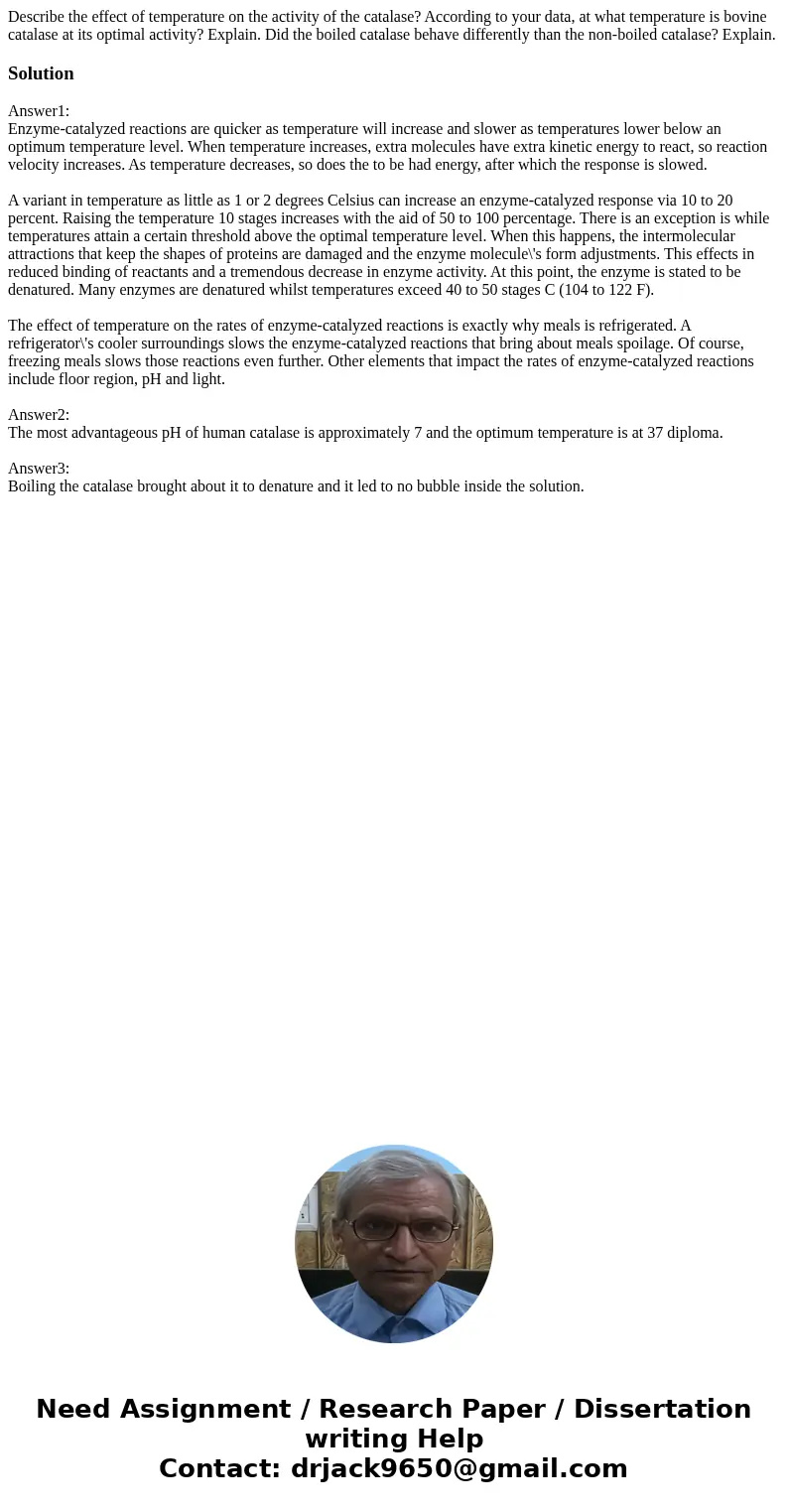Describe the effect of temperature on the activity of the ca
Solution
Answer1:
Enzyme-catalyzed reactions are quicker as temperature will increase and slower as temperatures lower below an optimum temperature level. When temperature increases, extra molecules have extra kinetic energy to react, so reaction velocity increases. As temperature decreases, so does the to be had energy, after which the response is slowed.
A variant in temperature as little as 1 or 2 degrees Celsius can increase an enzyme-catalyzed response via 10 to 20 percent. Raising the temperature 10 stages increases with the aid of 50 to 100 percentage. There is an exception is while temperatures attain a certain threshold above the optimal temperature level. When this happens, the intermolecular attractions that keep the shapes of proteins are damaged and the enzyme molecule\'s form adjustments. This effects in reduced binding of reactants and a tremendous decrease in enzyme activity. At this point, the enzyme is stated to be denatured. Many enzymes are denatured whilst temperatures exceed 40 to 50 stages C (104 to 122 F).
The effect of temperature on the rates of enzyme-catalyzed reactions is exactly why meals is refrigerated. A refrigerator\'s cooler surroundings slows the enzyme-catalyzed reactions that bring about meals spoilage. Of course, freezing meals slows those reactions even further. Other elements that impact the rates of enzyme-catalyzed reactions include floor region, pH and light.
Answer2:
The most advantageous pH of human catalase is approximately 7 and the optimum temperature is at 37 diploma.
Answer3:
Boiling the catalase brought about it to denature and it led to no bubble inside the solution.

 Homework Sourse
Homework Sourse